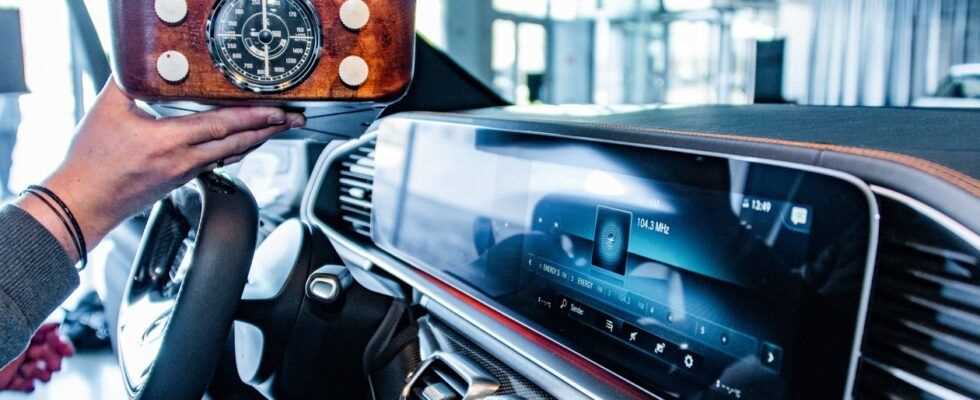From the bulky tube receiver to the multimedia information center: the car radio has undergone an impressive development over the past 100 years.
Craft solutions – the clunky beginnings:
The car radio originated in the USA in the early 1920s. What were initially unique pieces by hobbyists soon became popular among the growing group of motorists – despite the fragile tube technology, clunky housing and the antenna wires stretched across the windshield. In Europe, the car radios did not arrive until almost a decade later. The first series device was the “Blau Punkt Autosuper 5” from Bosch, which was presented in 1932 at the radio exhibition in Berlin.
Compact design – straight into the dashboard:
While our first car radio still weighed 12 kilos and had to be laboriously installed in the passenger footwell, the devices became much more compact after the Second World War so that they fit completely into the dashboard. One of the first examples was the Becker AS 49, which was available as an option for the Mercedes 170 S from 1950. Another important step towards simplification was the car radio DIN standard from 1984 (DIN-ISO 7736), which standardized connections and device sizes so that every radio fit into every vehicle.
Transistors – away with the tubes:
Electron tubes, which had been indispensable for a long time, tended to be too sensitive for use in cars, so that they had been gradually replaced by the more robust and smaller transistors since the 1950s. Philips launched the first pure transistor radio for cars in 1961, followed by the Becker Monte Carlo, which is still known today, in 1963. At the same time, portable radios also became popular outside of the car. Some manufacturers combined both ideas and developed portable car radios on a handle that could also be operated outside the vehicle.
FM – surround sound without noise:
While the first radios still received signals in the AM band, ultra-short waves emerged in the 1960s, allowing high-quality sound quality (“high fidelity”) with less noise and two-channel stereo transmission. Technology moved into cars in 1969 with the “Frankfurt Stereo” from Bosch, and the competition followed shortly afterwards. In the meantime, digital broadcasting has replaced its terrestrial predecessor. In addition to the even better sound quality, the DAB standard offers better reception and a wider range of stations. Since December 2020, new vehicles can no longer be registered with only VHF radio; if a radio is on board, it must be a DAB + model.
Cassette and co – radio alone is not enough:
Listening to the radio alone was soon no longer enough for drivers. Turntables for mounting under the dashboard were already on the market at the end of the 1950s, but they were never able to establish themselves due to their mechanical irritability. In the 1960s, the audio cassette then prevailed, which did not stutter even on bumpy roads. Another 20 years later the CD began its triumphal march, which has now also stalled. A CD player is no longer available in new cars; instead, music is streamed from the Internet or from a cell phone. In general, the former radio device has meanwhile become an infotainment center that provides entertainment as well as route planning, traffic information and weather data.
SPX
